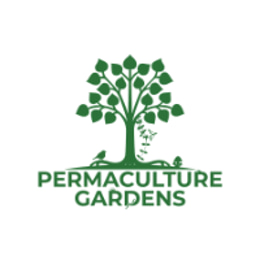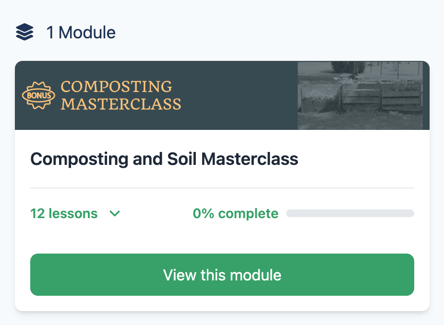Compost in Your Garden: Why You Need It & How to Do It Right
If you've ever wondered whether composting is worth the effort, this guide is for you. Whether you're looking to improve soil fertility, reduce waste, or make gardening easier, composting has something to offer. Below, we'll explore why composting matters and how you can get started with different methods.
4/1/202510 min read
Compost in Your Garden: Why You Need It & How to Do It Right
Disclaimer
This Compost in Your Garden: Why You Need It & How to Do It Right post contains some affiliate links. The small commission we receive if you choose to purchase goes towards making this gardening education available for free! We do not affiliate for anything we do not personally use. Thanks so much for your support!
Click the video above for the audio/visual version

What We'll Cover:
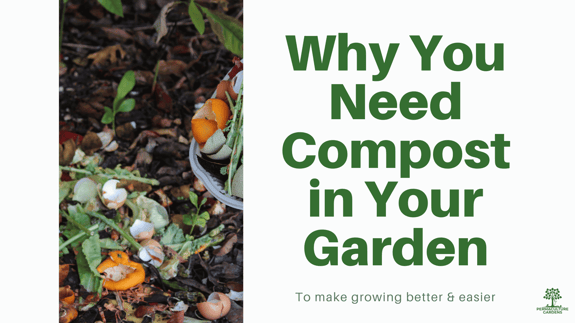

1. Why You Need Compost in Your Garden
There are three main reasons to compost:
To create fertile soil
To close the loop (and give back to the earth what was taken from it)
To work less
Compost to Create Fertile Soil
"There is an ecosystem below ground that supports the ecosystem aboveground."
We can view composting as the cultivation of the microbial/fungal life in the ground in order to create even more fertile soil.
The macro-arthropods and earthworms that come with good compost can naturally & gently till the soil, making it less compact and more well, fluffy.
Sometimes, this fluffiness is called “tilth.”
This improved structure, + organic life, increases the soils’ capacity for holding water.
Organic matter, which is the living part of the soil, is known to hold its weight in water ten times! This water-holding capacity is something sand, clay, or just bare dirt don’t do well.
If our soil cannot:
Retain water
Provide structure
Cultivate the microscopic life necessary to cycle minerals and nutrients for our plants to absorb...
...then it washes away.
When soil microbial life thrives, compost quality improves—leading to healthier gardens and healthier lives.
The Benefits of Compost:
Improves soil tilth – making the soil looser and more aerated
Increases water retention – organic matter holds up to 10 times its weight in water
Enhances soil structure – preventing erosion and nutrient loss
According to a Cornell study, topsoil is being lost to erosion at a rate of 10–40 times faster than it can be replenished. But you can help stop this erosion—through composting.
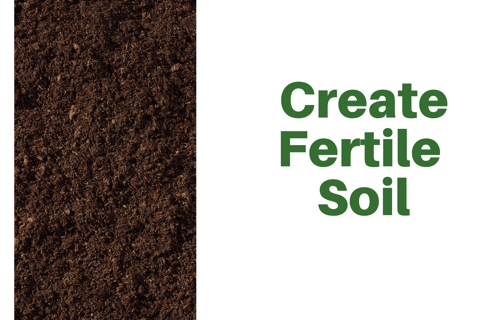

For every gardener and farmer, growing food comes down to one crucial element:
Soil
Composting converts lifeless dirt into “black gold.” It enhances microbial life, adding nutrients and creating a thriving underground ecosystem.
Compost to Close the Loop
Another great reason to compost? Closing the loop on food waste.
If you come to think of it, composting is doing more than just going zero-waste. It’s going “negative-waste,” if one could permit the use of such a term.
By using our waste and keeping it local, we avoid creating more carbon in the atmosphere by having the trash truck haul our garden refuse miles away.
It’s always good to take our cue from nature and mimic the efficient way she handles waste, which is to recycle it!
Not only do we forgo the use of fossil fuels as a result of composting, but we also capture existing carbon into the ground where we use it to grow food! So go, “negative-waste!”
Nature recycles everything. By mimicking this, we:
Reduce landfill waste
Minimize carbon emissions from transporting organic waste
Capture and store carbon back into the soil
Instead of sending organic matter away in a trash truck, compost keeps nutrients local—where they belong.
The final reason we have for you to compost, however, is sometimes the one most overlooked.
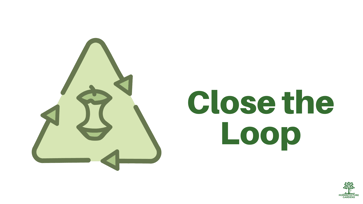

Compost to Do Less Work
"Both work & pollution are the results of incorrect design or unnatural systems." – Bill Mollison
We often do unnecessary work in our landscapes.
For example, landscapers in our previous HOA community would gather fallen pine needles, haul them off in trucks, and dump them at a municipal site.
Do we ever stop to ask? Why do we pay people to do that?
Is the standard of beauty manicured lawns and no leaves under trees?
It his how God created the world?
Protect their root layers from extreme temperatures
Conserve energy in colder months and
Feed the soil as the leaves decompose
By letting nature take its course, we save time, effort, and money.
In my family, we eagerly collect curbside leaf bags in the fall—to use as compost and mulch. It’s free organic material that would otherwise go to waste!


Nature has a reason for everything. Deciduous trees shed leaves in the fall to:
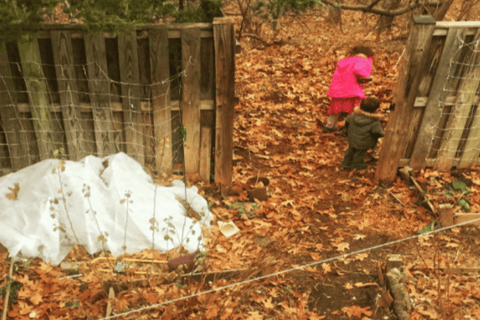

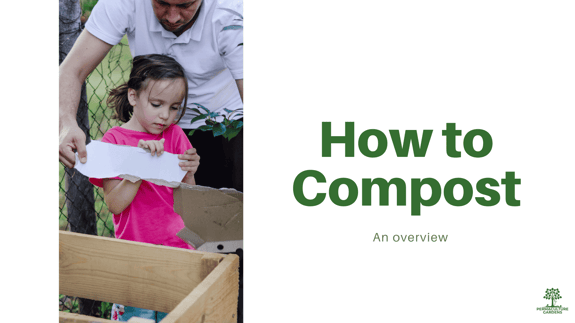

2. How to Compost (An Overview)
Collect organic material (kitchen scraps, garden clippings). Store scraps in a freezable container to avoid flies.
Choose a composting method (see below) based on your space and needs.
Find a composting location – outdoor aerobic bins, bokashi bins under the sink, or vermicompost indoors.
Maintain your compost – aerate aerobic piles, keep anaerobic setups sealed, and check for pests.
Harvest your compost – timelines vary from 2 weeks to 2 years.
3. Composting Methods to Try
1. Indoor Composting
Apply coffee grounds to your soil or water your plants with diluted coffee.
Use pencil shavings, especially in pots where your plants are a bit soggy and smelly.
Cut up some fast-decaying banana peels and “work them into” your pots.
"It is October, and I trust that your garden looks terrible, with dead vines, clumsy cabbage roots—refuse—all over it.
And I do hope you will leave everything there, and add the kitchen garbage to it through the winter."
2. Ruth Stout’s Lazy Composting Style
Ruth Stout was a gardener and author who lived from 1884–1980. Through her work during the era of rising pesticide use, she popularized a very minimalist approach to gardening. Her writing, especially in her book.
“Gardening Without Work: For the Aging, the Busy & the Indolent,” is a very practical, candid, and funny read!
Ruth Stout did not keep a compost heap but simply stuffed all her scraps into the perennial soft mulch that covered her entire garden.
At the Permaculture Gardens homestead, we use her method for growing potatoes. I think of all famous gardeners; she is perhaps the most deserving of the title, “lazy gardening queen.”
3. Vermicomposting
(Worm Composting)
"The use of earthworms to convert organic waste
into fertilizer."
Red wriggler worms (Eisenia fetida) eat half their weight in organic waste every day, producing nutrient-rich vermicast (worm compost). They are:
Ideal for small spaces and indoor setups
Requires a balance of nitrogen (green) and carbon (brown) materials
Worm bins should have a C**:N**** ratio of about 25:1**
You can keep a simple plastic tub for your worm composting, which you’ll need to turn over with a small trowel or pitchfork every few days.
Gardener, Emily Muphy’s video on making a simple worm bin is clear and simple to follow. We currently keep our worms in a similar container.
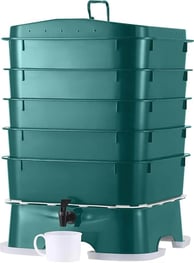

There are some commercial solutions for worm composting available. The most popular ones are worm towers that involve stacking layers of plastic bins with holes on the bottom for the worms to travel up as they consume the scraps in each layer. Worm towers are very good for temporary storage during the summer months, but not good for insulating the worms in the winter.


A WORM TOWER
You can collect earthworms from your garden or even build worm trenches or pits directly into your beds.
In our experience, the worm bin is the most hassle-free option.
If you have a productive “worm farm” going, you need about a pound of worms (approx. 2000), which you can find at places like Uncle Jim’s Worm Farm.
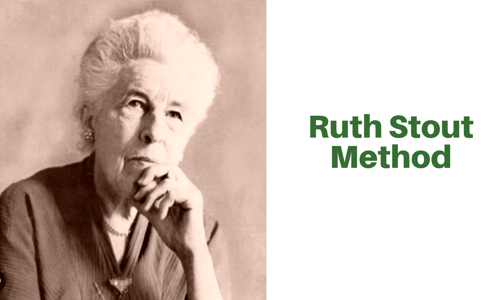

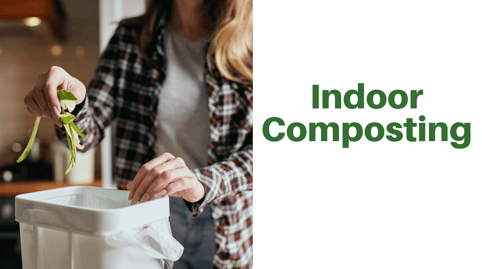

Crush up some eggshells. Blend them with some water and water your plants with this high-calcium drink.
Plant a few peas or beans (from your pantry) in each pot. You’re not expecting to harvest the beans. Just hoping the nitrogen-fixing bacteria you introduce in the soil will have a carry-over effect on your plants of interest.
Put the dust from sweeping your floors into the pots around your house instead of into the trash bin. Just make sure that the swept dust doesn’t include any plastic.
Potty train your children by having them practice on indoor plants
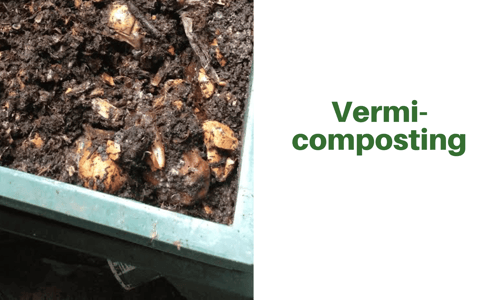

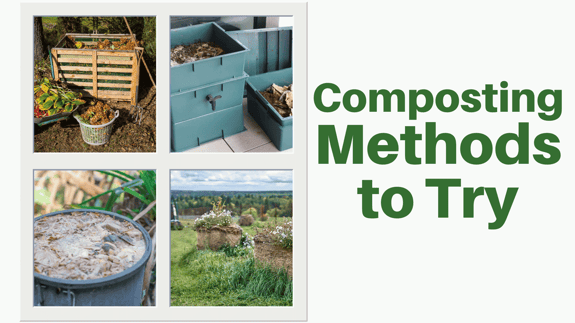

A Word on the Carbon to Nitrogen (C: N) Ratio
Vermicompost bins are relatively easy to care for. Make sure you don’t add too many kitchen scraps (which tend to be nitrogens) in ratio to brown matter (shredded newspaper/cardboard, leaves, etc.). If you notice your worm bin smelling foul, the environment may be too acidic and anaerobic for your worms.
The ideal Carbon to Nitrogen ratio in most compost piles is 25–30:1.
This ratio means that there are (25) twenty-five — (30) thirty units of carbon for every (1) one part of nitrogen.
If this C: N ratio is difficult to fathom, you can find examples of organic material and C: N ratios in this nifty calculator. You can combine organic materials and check if the overall pile has your desired C: N range.
Below is a video in which I demonstrate how I regulate this C: N ratio in a worm bin and, consequently, the pH of the compost.
4. Cold & Hot Composting
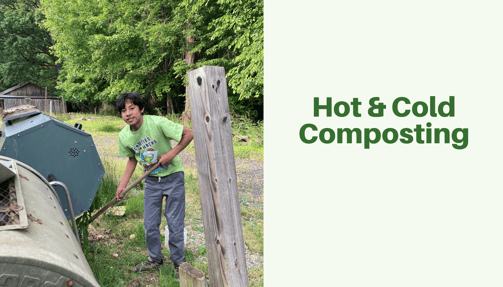

Cold composting takes several months to years but requires minimal effort
.
Hot composting (Berkeley method) decomposes organic matter in weeks but requires frequent turning and monitoring.
Enter hot composting or “Berkeley method” composting. This composting process, created at the University of California-Berkeley, is one that you have to manage more intentionally. Other composting masters such as.
Geoff Lawton and Elaine Ingham have refined this method to create a more complex and complete compost end product.
In a hot composting pile, the C: N ratio you would aim for would be 25–30:1.
If this seems difficult to fathom, permaculture teacher, Matt Powers, and soil scientist Elaine Ingham break it down into three piles:
(1/3) one-third cubic meter (or seventeen 5-gallon buckets) of “browns” made of dried leaves and clippings harvested after they had “gone to seed” in the late summer or early fall.
(1/3) one-third cubic meter (or seventeen 5-gallon buckets) of “greens,” which are green grass clippings or plant materials harvested before they had matured and “gone to seed.”
(1/3) one-third cubic meter (or seventeen 5-gallon buckets) of manure.
The entire pile must be at least one cubic meter in volume.
5. Bokashi Composting
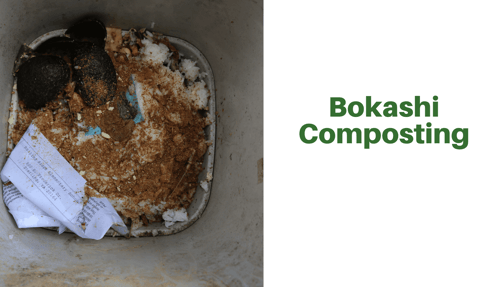

Uses anaerobic fermentation to break down food waste
Sealed containers prevent odors and pests
Can compost citrus, meats, and dairy (which traditional methods can’t handle)
What differentiates the bokashi method from the most common types of composting is that you deliberately work with anaerobic microorganisms to “ferment” your kitchen scraps.
You throw your scraps into an air-tight bucket with some of these friendly microorganisms and ferment the scraps much like you would your sauerkraut.
"If it has lived, it can live again." – Geoff Lawton
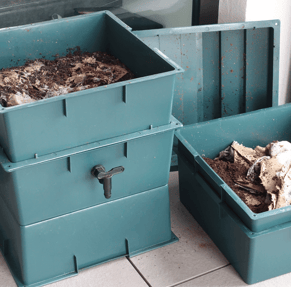

But in vermicompost bins, the ideal ratio was determined in this study to be 25.
Now that you have multiple composting options, it's time to start!
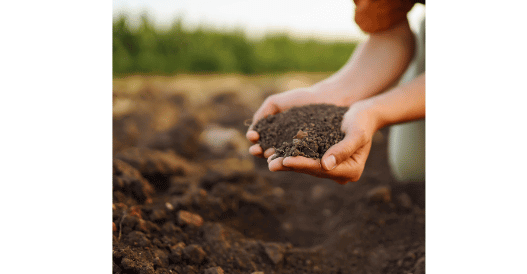

Your challenge:
✅ Choose at least one composting method from above.
✅ Start composting intentionally today.
If you need help committing to a habit of composting, grab our Hot Composting Streak-Tracker PDF:
4. Compost in Your Garden: Conclusion
5. FAQ
1. How long does composting take?
Composting timelines vary depending on the method used. Hot composting can take a few weeks, while cold composting may take several months to a year.
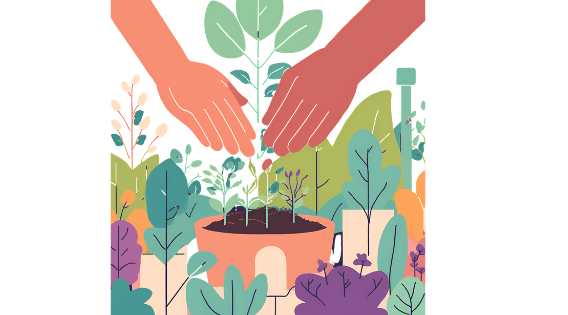

2. Can I compost meat and dairy?
Traditional aerobic composting methods discourage composting meat and dairy due to odor and pests. However, Bokashi composting allows for composting these items safely.
3. What is the ideal composting method for small spaces?
Vermicomposting is ideal for small spaces as it can be done indoors with minimal odor and maintenance.
4. Why does my compost smell bad?
A foul smell usually indicates too much nitrogen (green material) or excess moisture. Add more brown materials (like dry leaves or shredded paper) to balance it.
5. How do I know when my compost is ready?
Finished compost should be dark, crumbly, and have an earthy smell. It should no longer resemble its original components.
6. Do you know anything about Compost Tea?
Yes! We've done research on that here: Compost Tea Research
Learn More about Soil & Composting
💡 Dig Deeper: Enroll in our Self-Paced Composting & Soil Masterclass
📌 You’ll Learn:
The 4 key components for composting success
How to choose the best composting method for your space
Step-by-step videos to help you set up your compost bin or pile
I WANT TO GROW MORE
Sign Up for a
Permaculture Garden Course
I AM A BEGINNER
I WANT MY DREAM GARDEN
Sign up for the
Grow-It-Yourself Program
Everything you need to start a garden
may be hidden in your pantry.
Take a self-paced, step-by-step garden course to help you grow right from seed to harvest.
Make Your Organic Food Garden A Reality with
a garden mentor
a community
an app &
a proven plan!


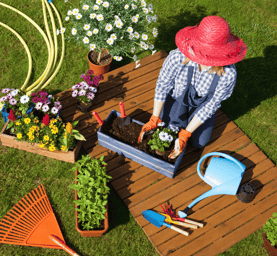



Choose one next step.
Which of the following are you?
Permaculture Gardens - your online resource for organic & sustainable gardens.
Contact
permaculturegardens@gmail.com
Bethany Farm
41558 Stumptown Rd.,
Leesburg, VA 20176
